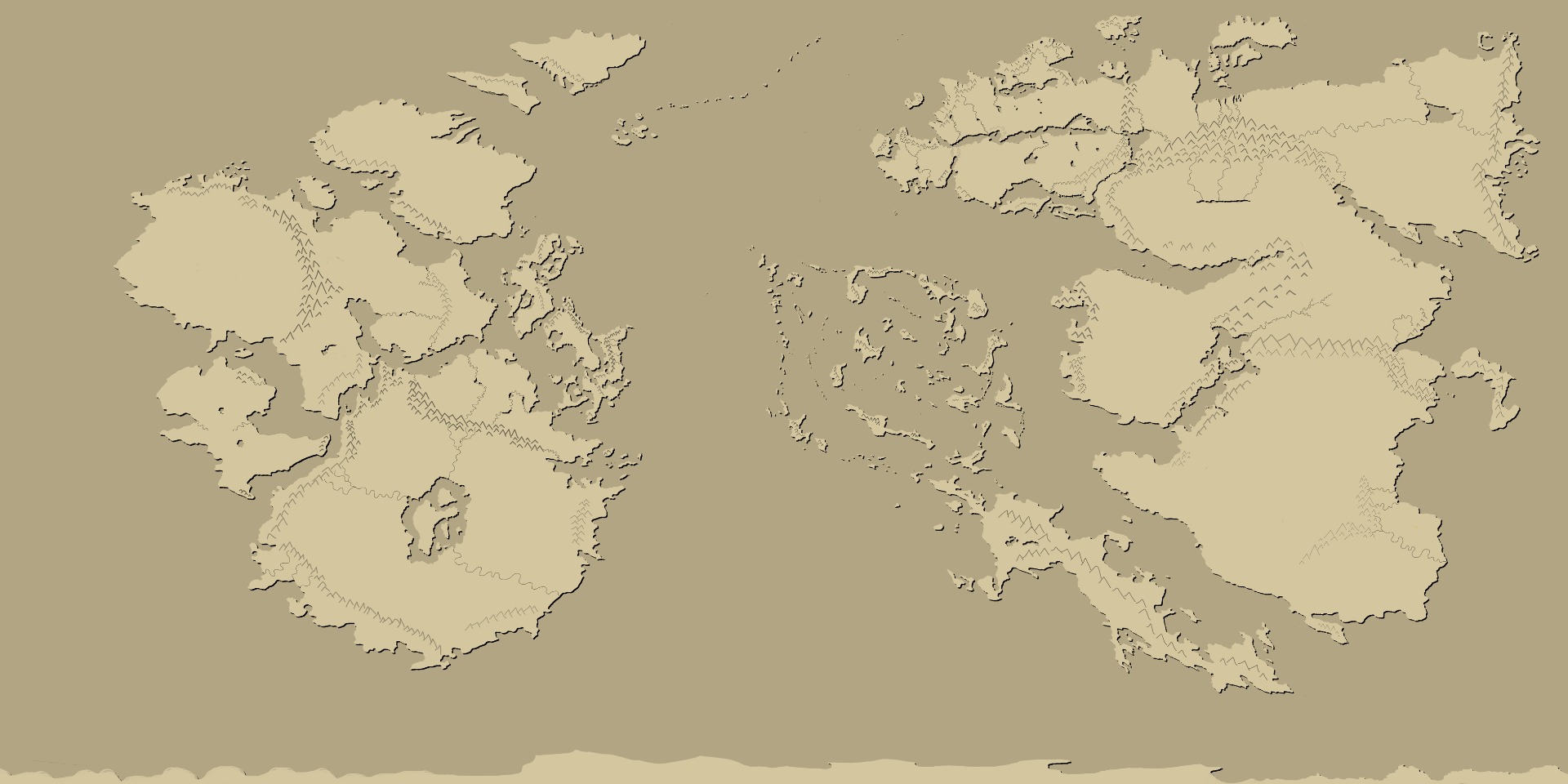
Ignosia, the unknown world
Ignosia, the unknown world
Unlike the old world, Ignosia is recorded as being several large continental landmasses by account of explorers. To the modern day there is much still to explore, especially beyond the colonial area of the ragged coast islands and Newland.
The ragged coast islands
Ignosia has been told of since ancient times, usually described in stories and legends as a forbidden twisted land of horror and suffering. The roots to these legends have become lost with time but the fear remained strong until the beginning of the era of enlightenment, where explorers and adventurers daring enough set sail for the mythical lands to the west. Despite this, few returned to say what they found and most that did return seldom managed to cross the great archipelago. But the rare ones that did come back, claiming to have reached the shores of the other land, all told the same kind of stories. Sailing with the western current they came upon land with great mountains rising high, where treacherous waters of cragged rock and raging sea defended green and lush shores of virgin soil. What the explorers had found were the ragged coast islands which cover a great span from the equator up to the temperate north. There are three major islands with multiple smaller ones surrounding them. The southern island, in its southern part has tropical rainforests with patches of seasonal monsoon and areas of tropical savanna due to rain shadows from the sporadic mountains. Moving north the lower part of the ragged mountain chain begins and follows the island north along the western coast which catches the clouds following the easterly trade winds. As the heavy clouds move in over the island they cover the land with thick mist before releasing their precipitation on the hillsides. This creates a very wet climate on the northern half of the island and has given the area the moniker of the fogland. On the western side of mountain the climate is directly opposite as only dry winds come over the mountains, creating a vast rain shadow.
This climate extends onto the middle island as well, though somewhat in revere as the ragged mountain rises on the eastern coast instead, creating a sliver of land that is wet and lush with green but leaves the rest of the island very dry. Despite this the southern part of the middle island has a semi-dry climate, being in the rain shadow of the southern islands mountain but having a body of water between itself and the mountain, as well as a gap just to the north where the middle and southern island are apart. This lets some moisture reach the middle island despite the mountains. This however does not help the upper half of the middle island escape the rain shadow of the mountains, creating a dry desert area named the silent lands which covers most of the area except the eastern coast which have some moderation due to the sea.
The northern island is the largest of the big three and has less mountains and more favorable climate. The lower half has tropical savanna along the southeastern coast while having a dry steppe towards the west. The northern half has humid subtropical along the eastern coastline while the western part see a more Mediterranean climate.
Newland
Newland lies west of the ragged coast
islands and is the middle continental area of Ignosia. So far only the eastern
part of the continent have been properly settled, with expeditions going out to
explore and record the remaining areas. The settled area of Newland has a
sub-tropic climate with mainly dry winters and very wet summers with the
exception of the southern coastal area which see rain year round which also
helps create the wetlands that dominate the landscape in the area. Right along
the south coast is swamps where mangrove forests grow. Moving inland the swamps
continue until gradually turning into marshes, which in turn going further
inland become grassy plains. These grass plains dominate the inland of Newland.
The topology of the plains is fairly flat with the main diverting feature being
the Long flow river which cut through the landscape as it goes from the
Highmounts mountain range down to the plains where is turns and flows down to
the southern swamps before flowing out into the sea. The land along the river
is a mix of plains, forest and wetland, and most settlements in the inland can
be found along the riverbanks. The plains continue north all the way to the
upper coast. Along the way the climate cools somewhat with seasons becoming
more pronounced than what is seen in the south. The flat terrain is only broken
by the Highmounts to the west and the southern twinmount in the upper north.
